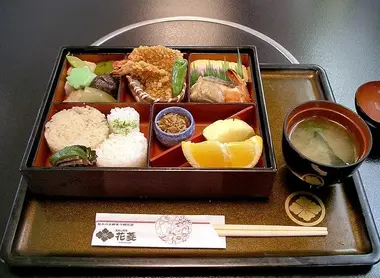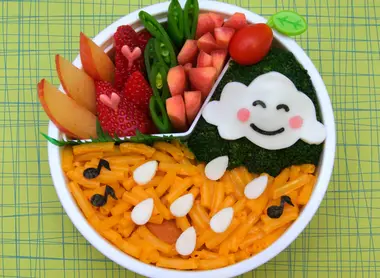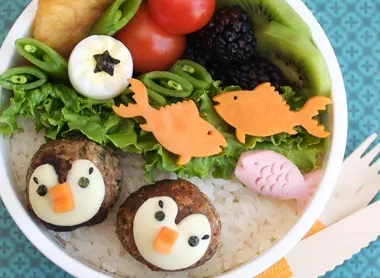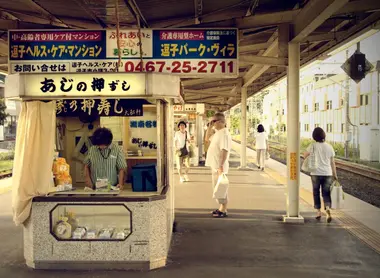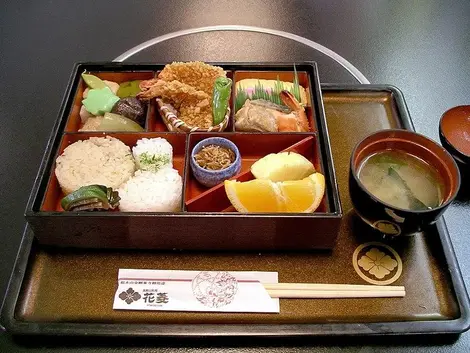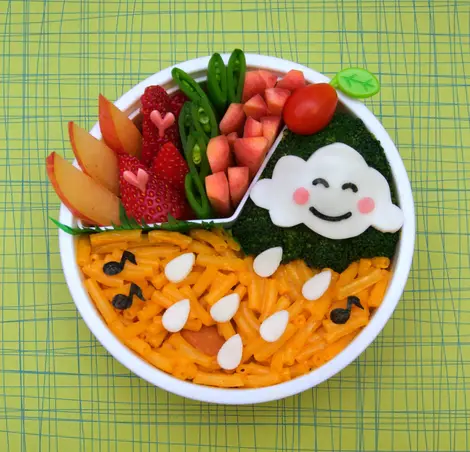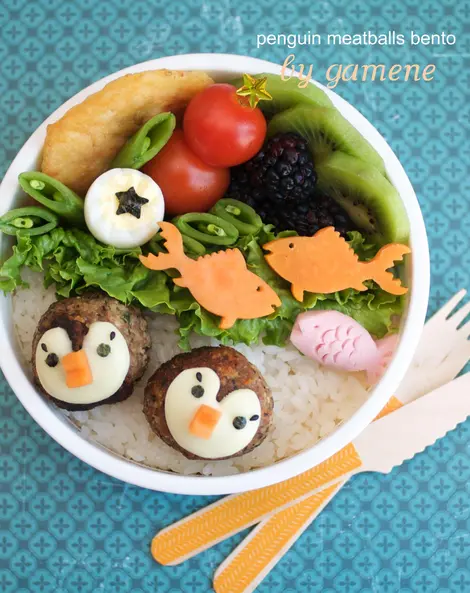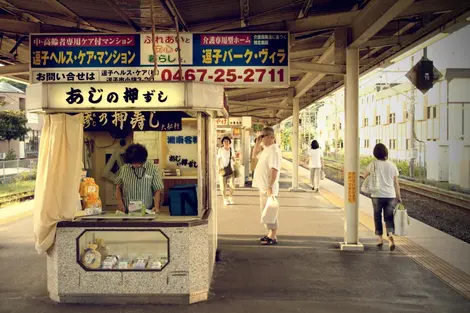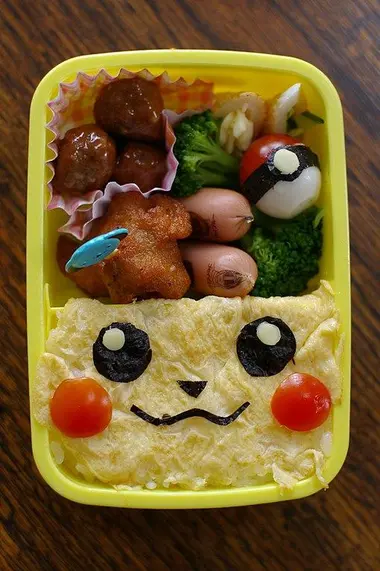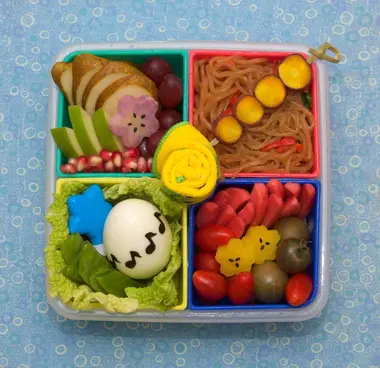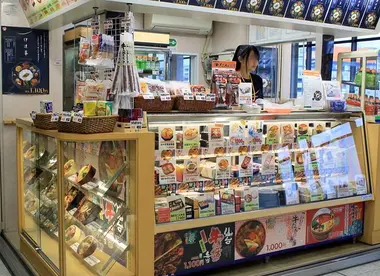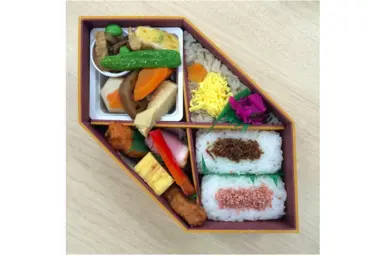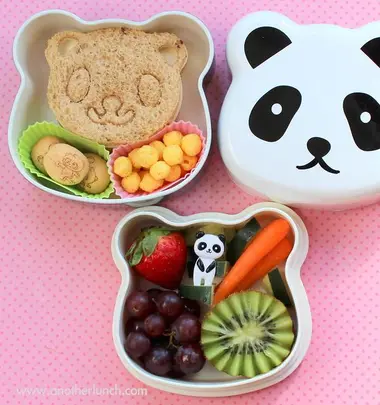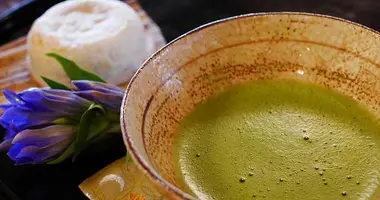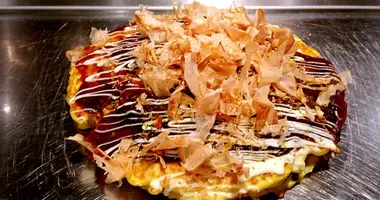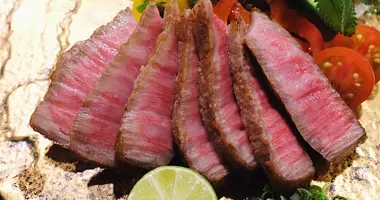Bento: the Japanese lunchbox
- Published on : 22/09/2019
- by : C.C./J.R.
- Youtube
The bento, the Japanese-style boxed meal
The bento, emblematic of Japanese culinary culture, is much more than a simple lunch box. This concept combining practicality, aesthetics and nutritional balance has spread throughout the world. Somewhere between age-old tradition and modern adaptation, the bento responds to a number of contemporary concerns: eating a balanced diet away from home, reducing waste and adding an artistic touch to your meal. In this article, we'll explore the origins of this Japanese lunchbox, its characteristics, its benefits and how to incorporate it into your daily routine.
What is a bento? Definition and essential features
In Japan, bento (弁当) refers to a quick meal, eaten away from home, in the form of a compartmentalized box. This type of meal is extremely popular in Japan, so much so that the Japanese add the prefix "-o", which marks respect. The bento takes the place of the sandwich or fast food, and is generally the lunch for schoolchildren, but also for employees at lunchtime.
Every morning, many Japanese mothers are busy in the kitchen, carefully preparing the lunch that their children will take to school, or their husbands to work. The choice of box is important, and its size varies according to each person's nutritional needs. So, a boy and a girl of the same age will each have their own adapted bento. In addition to quality, quantity is an essential criterion when preparing a bento.
The bento perfectly illustrates the Japanese philosophy of balance, both in flavors and presentation. It also represents a form of non-verbal communication, expressing attention and affection for the recipient. In a society where gestures sometimes count for more than words, preparing a neat bento is a way of saying "I take care of you".
The history of the bento: from ancient origins to worldwide popularity
The origins of the bento go back to the Kamakura era (1185-1333), when simple takeaway meals were prepared for travelers and warriors. At that time, the Japanese carried compact meals called "Bento" when they went fishing or hunting. These early bentos contained mainly white rice, millet and potatoes.
During this period, dried meals, known as hoshi-ii, became very popular. Bentos were carried in a small bag and contained cooked and dried rice. It was around the Azuchi-Momoyama period (1568-1600) that wooden boxes became available.
During the Edo period (1603-1868), the way food was presented and consumed underwent major changes, which led to the popularity of the bento. The bento became more refined and associated with special events such as hanami (cherry blossom viewing), Hina matsuri (doll festival), or at intermission during theatrical performances. Travelers carried their bento wrapped around their waists, also known as"koshibento".
In the second half of the 19th century, ekiben made its appearance in railway stations during the Meiji period (1868-1912). This term, combining "eki" (station) and "bento", refers to meals sold in train stations. Later, aluminum cans became popular during the Taisho period (1912-1926) and were considered luxury items.
After a decline during World War II and the post-war period, bentos enjoyed a resurgence in popularity in the 1980s. Made from modern materials such as plastic, they could be heated in the microwave, which considerably broadened their use. Today, the bento has conquered the world and adapted to the tastes and eating habits of many countries, while retaining its Japanese essence.
The traditional composition of a well-balanced bento
Traditionally, a well-balanced bento should contain 40% starch(rice, for example), 30% protein(fish or meat), 20% vegetables and finally a sprig of tsukemono, macerated vegetables or fruit for dessert. This breakdown ensures a complete, balanced meal that lasts all day.
Rice, a fundamental staple of Japanese cuisine, generally takes pride of place in the bento. It can be simply steamed, seasoned with vinegar as for sushi, or shaped into onigiri (rice dumplings). The latter are often wrapped in a sheet of nori seaweed and may contain a filling in their center.
For the protein side, we frequently find teriyaki chicken, grilled salmon, slices ofJapanese omelette tamagoyaki, or tofu for vegetarian versions. These proteins are prepared in such a way as to be easily eaten with chopsticks or directly with the fingers.
Vegetables bring color and vitamins to the bento. They can be raw, like grated carrots or cucumber slices, or cooked, like seasoned spinach (gomaae) or sautéed mushrooms. Tsukemono, fermented or pickled vegetables, add a tangy note that stimulates the appetite and aids digestion.
Finally, a few seasonal fruits or a sweet treat complete this well-thought-out meal. All in all, an appetizing meal that children will be delighted to discover at lunchtime. If the dietary aspect doesn't always dazzle them, they'll be amused by the originality of the composition, because in Japan, the bento is first tasted with the eyes.
The art of bento: between aesthetics and culinary creativity
To make the meal more playful, the food is not simply arranged randomly in the box. The most kawaii (cute) bentos are home to a whole world of cartoon characters, laughing animals and messages of love and encouragement. To bring this world to life, the food is carefully sculpted, decorated and cut to create a veritable culinary tableau.
Several techniques are practiced by expert bento cooks. One of these is called kazari-giri, meaning decorative cutting. A slice of carrot becomes a pretty flower, and a piece of radish a fish or a star. This practice also makes it possible to give life to the famous charaben, little characters that animate even the dullest of bentos!
This work is often facilitated by the use of specially designed utensils. To create the charaben's eyes in nori seaweed, you'll need a perforator specially designed for this purpose, and the installation will be simplified by the use of quasi-surgical pliers. To give the eggs a comical air, the use of a mold is an option of choice. Once cooked and shelled, the hard-boiled egg is placed in the mold and plunged into cold water. A few moments later, your egg will be transformed into a car, a cat or a chick.
The kyaraben, another artistic form of bento, is particularly popular for children's meals. In this style, food is arranged to resemble cartoon characters, animals or patterns. Japanese mothers often compete with each other to create kyaraben that will surprise and delight their children. This form of culinary expression has become so popular that it has given rise to competitions and exhibitions in Japan.
The art of bento is not just about appearance: it also incorporates practical considerations such as the balance of flavors, textures and temperatures. Each item is designed to be tasty even when eaten at room temperature, several hours after preparation.
The different types of bento boxes and their specific features
The box, too, plays an important role in bento culture. It's called the bento bakô (bento box), and is generally compartmentalized to separate different foods. Traditionally made of lacquered wood, it can also be made of ceramic, synthetic resin, plastic or aluminum. Each material has its advantages and disadvantages.
Lacquered wood boxes are the most traditional and elegant. They preserve the freshness and flavor of food while adding an unrivalled aesthetic touch. However, they require special care and are generally not microwave- or dishwasher-safe.
Plastic cans are the most popular today, thanks to their lightness, affordability and ease of maintenance. They are often microwave and dishwasher-safe. However, it is important to choose BPA-free plastics to avoid health risks.
Aluminum or stainless steel cans are durable and excellent for maintaining food temperature. They are ideal for hot meals, but cannot be used in the microwave.
Bento boxes can have one, two or even three interlocking tiers. Home-prepared bento boxes are usually wrapped in a furoshiki, a piece of cloth that makes them easy to transport while keeping them warm.
There are also specific types of bento, depending on their use or origin. The ekiben (eki for station; ben for bento), sold in stations and on trains, is specially designed for travel. The shokado bento, presented in a square box divided into four compartments, is inspired by the tea ceremony and is often found in high-end restaurants.
Preparing your own bento: practical tips and recipe ideas
Making your own bento may seem intimidating at first, but with a few practical tips, it becomes a creative and rewarding activity. Start by purchasing a bento box adapted to your needs, taking into account your appetite and lifestyle.
For a balanced bento, follow the rule of traditional proportions: 40% starch, 30% protein, 20% vegetables and 10% fruit or dessert. This composition guarantees a nutritious and satisfying meal.
When preparing your bento, the first thing to think about is food safety. All food must be well cooked and cooled before being placed in the box to avoid bacterial proliferation. Some ingredients, such as vinegared rice, pickled vegetables or foods containing vinegar or lemon, keep better at room temperature.
To save time in the morning, prepare certain items the day before. For example, you can cook rice, marinate proteins or prepare vegetables in advance. In the morning, all you have to do is assemble your bento.
Easy recipes to get you started include onigiri (rice dumplings) with salmon or umeboshi (salted plum), sautéed vegetables and egg rolls. Leftovers from the previous evening's dinner can also be incorporated into your bento to avoid waste.
For variety, don't hesitate to draw inspiration from other cuisines: falafels with hummus and grilled vegetables for a Mediterranean bento, or wraps, tabbouleh and raw vegetables for a more Western version. The important thing is to maintain nutritional balance while enjoying yourself.
If you'd like to deepen your Japanese culinary knowledge and learn how to prepare authentic dishes for your bentos, why not take part in a cooking workshop? Discover our "Cooking at home" activity in Tokyo for an immersive experience in Japanese gastronomy.
The benefits of bento: economic, ecological and nutritional
Adopting the bento as a daily meal solution offers numerous economic advantages. By preparing your own lunch, you save considerably compared with meals bought in restaurants or cafeterias. According to some studies, you could save up to 3,000 euros a year by taking your own lunch to work!
In ecological terms, bento is a sustainable alternative to disposable packaging. By using a reusable box, you significantly reduce your daily waste production. What's more, bento preparation encourages the use of leftovers, helping to combat food waste.
The nutritional benefits are just as important. The bento's compartmentalized format naturally encourages food diversification and the creation of balanced meals. Portions are generally well controlled, which helps maintain a healthy weight. By preparing your own bento, you also have total control over the ingredients used, avoiding the additives and preservatives often found in industrially prepared meals.
The bento also offers a more mindful eating experience. Its careful presentation invites you to take the time to appreciate each bite and recognize the value of food. This more mindful approach to eating can contribute to greater post-meal satisfaction and a healthier relationship with food.
For travelers, especially in Japan, discovering local specialties through regional bentos is an enriching cultural experience. Next time you're in Kyoto, scout out the best produce at the Nishiki Market with our Travel Angel and then prepare your own bentos with authentic ingredients.
In Tokyo, why not take a "Food Tour" on the Yamanote through 5 specialties that could inspire your future bentos creations? Or discover the Grandes et petites tables du Japon to immerse yourself in the richness of Japanese gastronomy.
Last but not least, the bento can become a wonderful vehicle for sharing and cultural transmission. Preparing bentos as a family is a fun activity that introduces children to a healthy and diversified diet. It's also an opportunity to introduce them to flavors from other parts of the world, and to raise their awareness of the ecological issues surrounding food.
To bring a bit of bento culture home with you, take a look at our guide to the 10 gifts to bring back from Japan, among which you may find the perfect bento box to start your culinary adventure.
